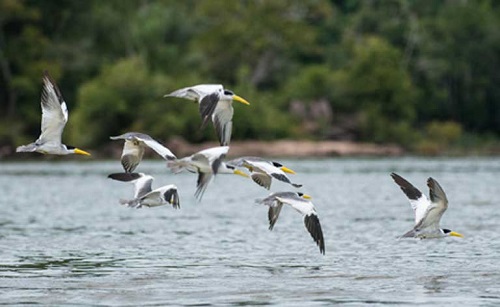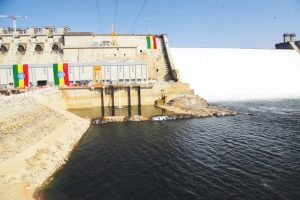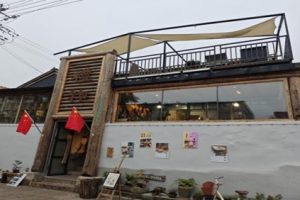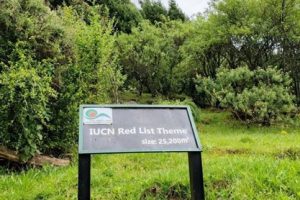
BY EPHREM ANDARGACHEW
The term ecosystem, in biological terms, indicates all living things including plants, animals, and microorganisms in each area, as well as their relations with each other, and with their non-living environments namely water, weather, Earth, sun, soil, climate, and atmosphere. Each organism in an ecosystem has a critical part to play and contribute to maintaining the health and productivity of an ecosystem.
Although a balanced and properly managed ecosystem is important, currently the ecosystem of the world has been challenged by the overall activities of human beings. Hence, Ethiopia, including countries of the world, has devised various mechanisms to mitigate biodiversity losses. The Grand Ethiopian Renaissance Dam (GERD), among others, could be a best example to mitigate the effect of climate change.
In Ethiopia, as part of this globe, population growth and economic development have required water for hydropower and irrigation developments in the country. Based on using these water resources for socio-economic development and the alleviation of poverty, the Government and the people of Ethiopia have started constructing the Grand Ethiopian Renaissance Dam (GERD).
The GERD is primarily aimed at generating power, with an expected capacity of 6,000MW, the main and saddle dams will also create reservoirs with an impounding capacity of 74 billion cubic meters. Hence, it is the largest hydropower project in Africa.
Along with fulfilling the energy demand of the country, the dam is built a unique environment and ecosystem that crosses various climatic zones. Taking the significance of the GERD project to the nation as a sustainable source of power, together with the economic and social consequences of degraded land use in the watershed, land management to reduce erosion will result in long-term benefits at multiple levels.
Studies indicated that the Grand Ethiopian Renaissance Dam (GERD) will be capable of handling a flood of 19,370 cubic meters per second, will reduce alluvium in Sudan by 100 million cubic meters, and also facilitate irrigation of around 500,000ha of new agricultural lands. It will also reduce approximately 40 kilometers of flooding in Sudan, upon its completion.
Besides, the regulated flow of water from the Renaissance dam will improve agriculture and the impact from the evaporation of water from the dam will be minimal compared with other dams in Ethiopia. This will improve the water conservation of the country. Apart from water resources reservation, the dam will have the potential to balance the ecosystems of the area and its surrounding.
Bisrat Woldemichael (2018), in his academic work entitled “The challenges and opportunities of the Grand Renaissance Dam for sustainable Energy – Water – Food -Ecosystem Services Nexus in Ethiopia” stated that the GERD and its surrounding area have the existence of natural and cultural ecosystem services. The project’s area has plenty of water resources, including Blue Nile, Beles, and other tributaries. The GERD will be providing a new artificial lake that is important to obtain food from fishery and agricultural products from irrigation around the area. In the long term, there will also be a possibility to attract migrated insects, birds, and animals when the ecosystem services are managed properly.
Ethiopia is rich in biodiversity species. Despite its biodiversity richness, all the country’s plant and animal biodiversity species haven’t been studied exhaustively due to the financial and knowledge limitations of the nation. Hence, some of the species have been lost or extinct due to climate change, erosion, land degradations, and so on. Therefore, the construction of the dam will have various benefits to Ethiopia to restore the existing and lost biodiversity of the country.
Ethiopian Meat and Dairy Industry Development Institute Deputy Director Tariku Teka told The Ethiopian Herald that conserving the water resources of the country will help to adjust the ecosystem of the country. This will help to regain the lost plant species which are important to develop the nation’s animal resources.
According to Environment, Forest, and Climate Change Commission, Ethiopia’s green development strategy revolves principally harmonies agricultural development, land management coordination, forestry development and protection within their biodiversity spheres, and through appropriate, improved, and selected modern technology products.
Hence, the construction of GERD has brought an important role in this regard. Because it brings opportunities to conserve water resources which are important for the production of renewable energy and ecosystems protection.
Kotebe Education University Biology Department Assistant Professor Bruktawit Abdu in her part noted that conserving the water resources of the country is important to conserve the nation’s birds. Because birds need clean water and an unpolluted environment for living. Besides, birds are important specious for many ecosystems since they have been playing a vital role in controlling pests, acting as pollinators, and maintaining island ecology.
According to Ethiopian Biodiversity Institute Research, Dissemination and Project Implementation Director and Botanist Tesfaye Awas (Ph.D.), “identifying and conserving the plant species are important. Because more than 70 percent of the people use traditional medicines for their healthcare and about 95 percent of the preparations are made from plant origin.”
In Ethiopia, studies identify about 6027 species of plants so far and the studies are still undertaken to identify the rest of the nation’s plant species. Hence, the retaining of water for hydro power purpose is important to experiences new medicinal plants.
Therefore, the construction of the dams and conserving water bodies clean is key to regaining the lost biodiversity species. Restoring biodiversity in turn brings multi ecosystems benefits to the nation, he explains.
Despite the significance of the diversity of the plant species, the plants are facing various challenges namely, environmental degradation, deforestation, recurrent drought, and so on. Besides, habitat destruction due to overexploitation, expansion of agricultural lands, and so on are challenges to the water bodies of the country. Thus, along with restoring the ecosystem of the country, water conservation is very important to regain the lost biodiversity of the country, he said.
According to Ethiopian Biodiversity Institution Director Dr. Melese Mario, apart from reducing the greenhouse effect, dams especially, the Grand Ethiopian Renaissance Dam (GERD) would have the contribution to restore and regain the existing and lost biodiversity species.
To bring ecological benefits, therefore, the government should give due attention to protecting the damage of invasive weed species, water pollution linked to unregulated urban and industrial development to water bodies, he added.
The Guba Woreda in Benishangul-gumuz regional administrative states is rich in natural resources, especially water resources, fertile agricultural land, flora, fauna both in terrestrial and aquatic and minerals. Cognizant of this, the government has been doing various activities to protect and conserve the biodiversity of the area and its surrounding since it is important for many Ethiopians’ daily livelihood which could be a good example for others water bodies of the country.
The Ethiopian Herald December 12/2021





